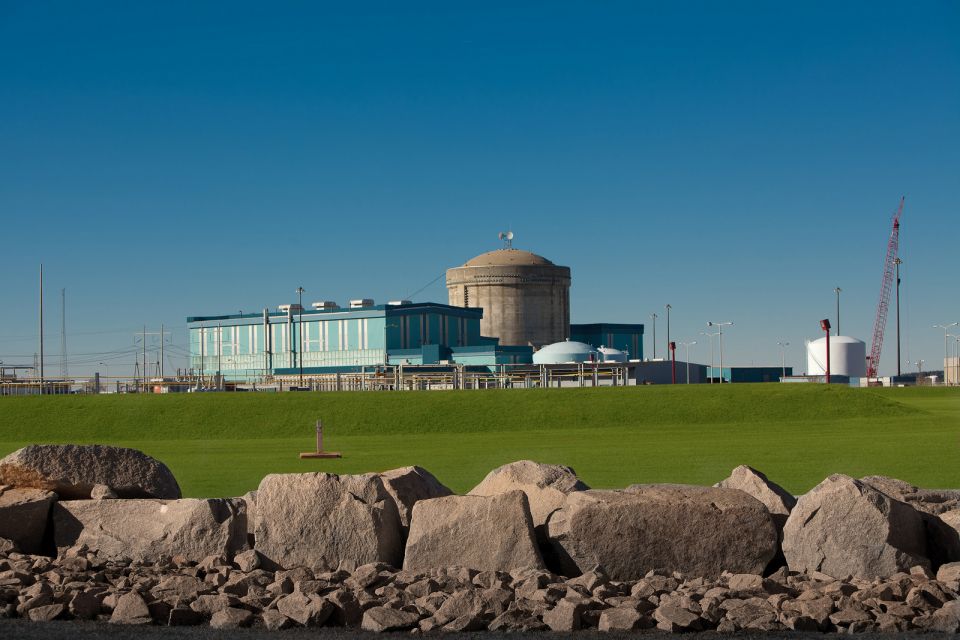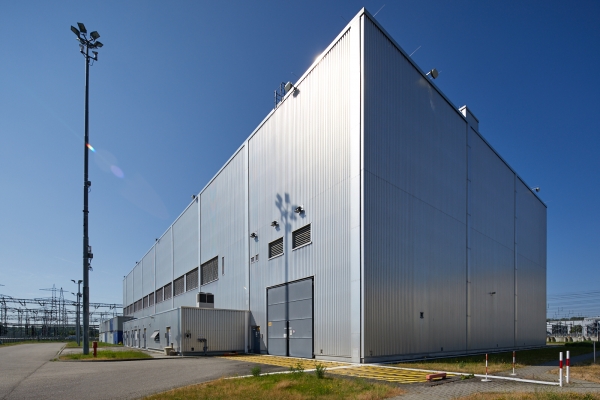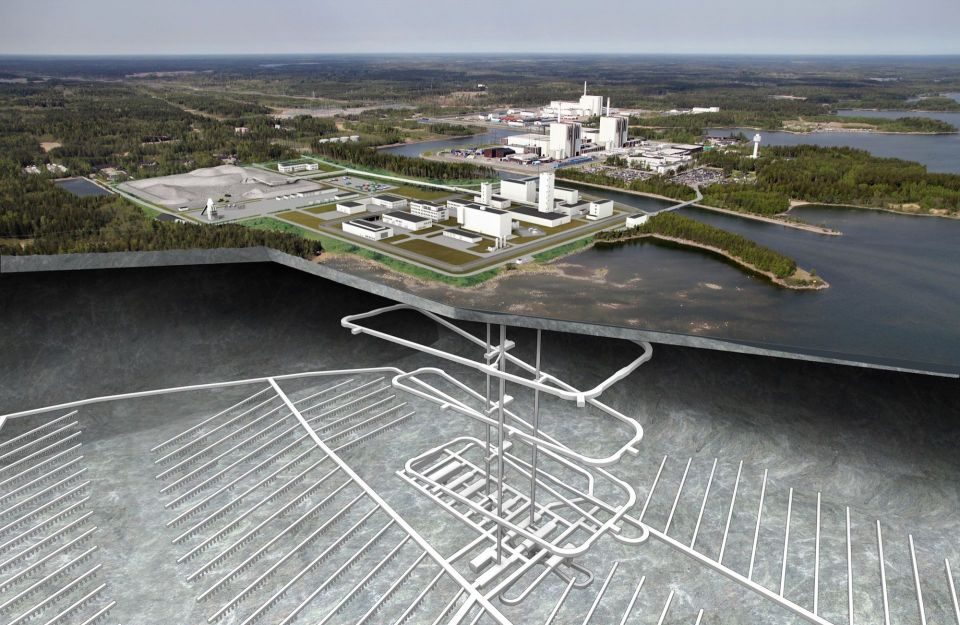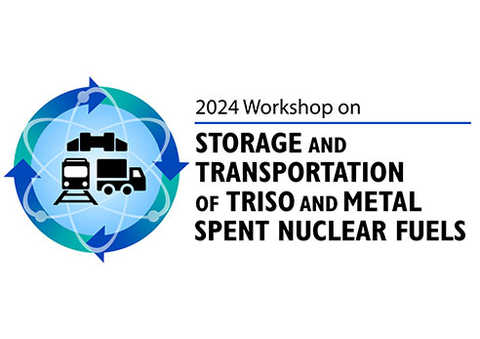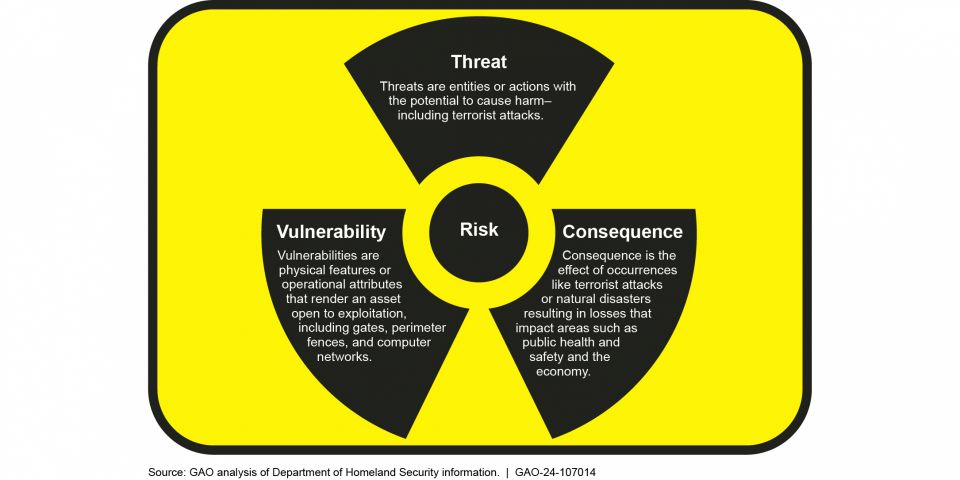Environmental Impact Evaluations – Seeing the Bigger (Nuclear vs. Fossil) Picture
 As I discussed last fall, a federal appeals court ordered the Nuclear Regulatory Commission to perform more thorough evaluations in support of its new Waste Confidence Rule, particularly with respect to the potential impacts of long-term storage of spent fuel at plant sites. While those evaluations are being performed, the NRC has suspended all new plant licensing and plant license renewals.
As I discussed last fall, a federal appeals court ordered the Nuclear Regulatory Commission to perform more thorough evaluations in support of its new Waste Confidence Rule, particularly with respect to the potential impacts of long-term storage of spent fuel at plant sites. While those evaluations are being performed, the NRC has suspended all new plant licensing and plant license renewals.
As discussed in that post, most experts believe that this issue will be resolved, in a timely manner, through additional analysis. Permanent cessation of licensing activity (until a repository is sited or built), or substantial new requirements (such as moving all fuel over 5 years old to dry storage) were considered unlikely. The NRC predicted that it could finish the required evaluations in ~2 years.
Reactions to NRC's Waste Confidence Evaluations
 Predictably, anti-nuclear "environmental" groups are claiming that the evaluations that the NRC are doing are insufficient. They say that the evaluations should consider waste being stored on site for centuries, consider risks of terrorist attacks, and risks from severe earthquakes like that which struck Fukushima. They also advocate moving all >5 year spent fuel to dry storage. Finally, they say that 2 years is nowhere near long enough for the evaluations, and that all licensing activity should remain suspended for as long as it takes for "adequate" review to be performed.
Predictably, anti-nuclear "environmental" groups are claiming that the evaluations that the NRC are doing are insufficient. They say that the evaluations should consider waste being stored on site for centuries, consider risks of terrorist attacks, and risks from severe earthquakes like that which struck Fukushima. They also advocate moving all >5 year spent fuel to dry storage. Finally, they say that 2 years is nowhere near long enough for the evaluations, and that all licensing activity should remain suspended for as long as it takes for "adequate" review to be performed.
And now, the attorneys general from four New England states are joining in, filing a petition for the NRC to do a "more thorough" review of the risks/impacts of long term on-site fuel storage. They are asking the NRC to reject the conclusions and recommendations of its technical staff, because they did not "adequately address the risks of spent fuel storage." The AGs also state that the NRC's evaluation did not give enough consideration to two options; requiring that all >5 year cooled fuel be placed into dry storage, and not allowing further production of spent fuel until a repository is constructed. (Yes, you heard that right, the AGs from four states are actually asking the NRC to consider shutting down the nuclear power industry.)
What are they after?
One hopes that all the AGs are asking for is for the NRC to do more homework to provide a stronger case. That would allow them to tell the public that they forced the NRC to do a "better job" and look out for their safety. Or perhaps, they're hoping for the 5-year dry cask storage requirement, allowing them to point to a tangible "improvement" that they can take credit for (or perhaps to just extract a pound of flesh from the industry). One really hopes that they don't really want the industry to shut down.
In my view, is it's not that those risks (of long term storage) have not been evaluated. It's that the people in question don't like the answer. In other words, they will never be satisfied until the "evaluation" gives them the answer they want, which is that the risks are unacceptable, or that the industry must take some extensive, expensive, and burdensome actions.
Negligible risks/impacts
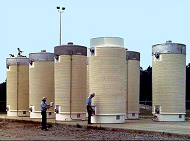 As someone who works in the area of dry fuel storage, I can tell you that the answer is pretty obvious. The risks of spent fuel storage are utterly negligible, compared to other risks that society routinely faces in general, and in particular, compared to the risks associated with alternative (fossil) power generation options. No credible scenario for a significant release from dry storage casks exists. Even terrorist attacks would have a minimal public health consequence.
As someone who works in the area of dry fuel storage, I can tell you that the answer is pretty obvious. The risks of spent fuel storage are utterly negligible, compared to other risks that society routinely faces in general, and in particular, compared to the risks associated with alternative (fossil) power generation options. No credible scenario for a significant release from dry storage casks exists. Even terrorist attacks would have a minimal public health consequence.
Spent fuel pool risks are also quite low, and neither the 5-year cask requirement nor a repository would do much to reduce those (small) risks, since almost all the heat in spent fuel pools is from the fuel younger than 5 years. The theory of spent fuel pool cladding melt or fire (in the extremely unlikely, hypothetical event of pool drainage) is quite dubious in the first place, and it is being addressed at the few plants where it is thought to be a potential concern. Also of note is the fact that the spent fuel pools did NOT release any significant amount of radioactivity at Fukushima.
The fact is that nuclear waste is generated in a miniscule volume and, unlike the wastes from fossil plants and other industries, it has always been safely and fully contained, has never been released into the environment, and has never caused any harm. Further evaluation needed? In my view, the health/environmental impact evaluation for long-term onsite storage of used fuel could be adequately given in one sentence:
"The public health risks and environmental impacts of long term onsite storage of used nuclear fuel are clearly orders of magnitude less than those of the fossil fueled power generation that would otherwise be used in place of nuclear generation."
It's clear that shutting the industry down until a repository is built will result in fossil fuels being used for most of the replacement power. Even if new plant licensing and plant life extensions are suspended, for a long time, the result will eventually be some reduction in nuclear generation, and will result in some increase in fossil generation.
San Onofre
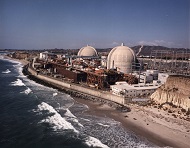 Meanwhile, in Southern California, the San Onofre plant has been shut down for years due to tube failure problems with its steam generators (as discussed on this site here and here). The NRC has required that the plant remain shut until all the issues are thoroughly investigated; a process that has been taking a very long time. The NRC has been under a lot of political pressure to take its time and do a "thorough" investigation.
Meanwhile, in Southern California, the San Onofre plant has been shut down for years due to tube failure problems with its steam generators (as discussed on this site here and here). The NRC has required that the plant remain shut until all the issues are thoroughly investigated; a process that has been taking a very long time. The NRC has been under a lot of political pressure to take its time and do a "thorough" investigation.
Steam generator replacement has been discussed. The utility also proposed running one unit at 70-percent power, based on evaluations showing that it would not result in significant tube vibration and degradation. The NRC has decided to allow public hearings on that (70-percent power) restart request, and having it require a license amendment is even being discussed. In order to meet peak power demand while San Onofre remains shut, two ~50 year old, highly polluting fossil plants in Huntington Beach were taken out of out of retirement and fired up.
In terms of the potential consequences of steam generator tube failure, it seems (based on what I've read) that the notion of steam generator tube failures causing a meltdown (i.e., core damage) is a real stretch. The only real potential is that the sudden failure of a large number of tubes could cause a significant fraction of the primary coolant loop water (and the radioactivity therein) to be released into the environment. (Note that even nuclear opponent Arnie Gunderson did not say that steam generator tube failures could cause a "meltdown" in this article.)
While one can only guess what the political/public reaction to such a release would be, its actual health consequences would be negligible to non-existent, particularly in comparison to the ongoing impacts of fossil generation. In reality, what is most likely to happen if things didn't work out and the tubes started to fail is that some tubes would fail, the plant operators would notice the increase in secondary side activity, and they would safely shut the plant down.
Not only have old, dirty fossil fueled plants been fired up while the whole San Onofre saga played out, but the utility has just announced that it will close both of the reactors due to this issue. This will result in ~2000 MW of additional fossil fueled generation for several decades.
Blinders - Not looking at big picture
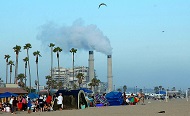 The common theme for these two stories is that nuclear risks are being evaluated in isolation. Overall impacts, such as the effects of reduced nuclear on the overall power generation system, are not being considered. Nuclear operations are held to a standard of perfection, or some arbitrary standard that regulators and other politically powerful stakeholders view as being adequate. That, as opposed to being compared to other risks accepted by society or, more importantly, the risks related to the alternative (primarily fossil) generation that would be used in place of nuclear.
The common theme for these two stories is that nuclear risks are being evaluated in isolation. Overall impacts, such as the effects of reduced nuclear on the overall power generation system, are not being considered. Nuclear operations are held to a standard of perfection, or some arbitrary standard that regulators and other politically powerful stakeholders view as being adequate. That, as opposed to being compared to other risks accepted by society or, more importantly, the risks related to the alternative (primarily fossil) generation that would be used in place of nuclear.
Again, what are these people seeking from another several years of waste storage evaluations, when it is obvious, by cursory inspection, that the risks of waste storage are negligible compared to those of fossil generation alternatives? Perhaps they hope that the evaluations will uncover practical steps that could reduce the risks even further. At least the dry storage proposal is ostensibly that kind of step, although whether it is worth the cost and effort is highly debatable.
New England is home to many gross-polluting coal plants (many of which make the "Dirty Dozen" list of top polluters). If those states' AGs really cared about their public's health risks, they'd focus their efforts on getting those plants cleaned up or closed. They wouldn't be wasting any time or effort on negligible risks associated with used nuclear fuel.
Why is the mindset that San Onofre cannot be reopened until everything is completely analyzed, understood, and resolved, and until the chance of steam generator failure is all but eliminated? And if all the hoops result in the plant's closure, so be it. Where was the environmental impact evaluation that compared the risk of running San Onofre to the health risks of operating two 50-year old fossil plants that are located in a relatively high population density area? Given the limited health consequences of any credible steam generator failure scenario, it seems clear what such an evaluation would show.
It is likely that the operation of the Huntington Beach fossil plants has already had a larger public health impact than what would occur even in the event of a worst-case steam generator failure scenario (i.e., release of primary coolant loop activity). And finally, how about the consequences of the plant being closed? Have they compared the risks of steam generator failure (low probability times limited consequence) to several decades worth of fossil fueled power generation? How about global warming impact?
Less nuclear = More fossil
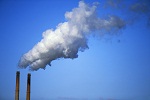 One thing that people need to be clear on is that using less nuclear power primarily results in increased use of fossil fuels. That's certainly what's happening in Japan. (They're turning to coal to replace nuclear, since imported oil and gas are costing too much.) In Germany, where a huge effort is being made on renewables, coal generation is being significantly increased to offset the loss of nuclear. Even if Germany did succeed in building enough renewable generation to offset the lost nuclear generation, they'd still effectively be choosing fossil fuels over nuclear, since they could have used the renewables to replace fossil instead.
One thing that people need to be clear on is that using less nuclear power primarily results in increased use of fossil fuels. That's certainly what's happening in Japan. (They're turning to coal to replace nuclear, since imported oil and gas are costing too much.) In Germany, where a huge effort is being made on renewables, coal generation is being significantly increased to offset the loss of nuclear. Even if Germany did succeed in building enough renewable generation to offset the lost nuclear generation, they'd still effectively be choosing fossil fuels over nuclear, since they could have used the renewables to replace fossil instead.
Reducing nuclear use will not cause renewable generation to increase. Construction of renewable capacity is primarily driven by government mandate and/or large subsidy. The final fraction of renewable generation will likely be close to the maximum practical amount based on intermittentcy limitations.
The only real question is whether the net effect of reduced nuclear would primarily be an increase of gas or coal use. If one assumes future environmental regulations that will limit the use of coal, then arguing that nuclear will be replaced by gas may be reasonable (especially in California). On the other hand, unless coal is limited by policy, one could argue that, in the end, reduced nuclear would mean more coal since the supply of gas will reach its limit at some point. Use of gas to replace nuclear would drive up the price of gas, which would result in more existing coal plants remaining open or operating more hours per year. This is already happening in the United States, now that gas prices have risen somewhat from historic lows. This would result in a net effect of nuclear being replaced by coal.
When pressed, nuclear opponents usually cede that fossil fuels are worse than nuclear (since the facts are actually pretty clear on that point). And yet, it's generally the case that nuclear plants are closed when anything is out of sorts, and are required to address all the issues before they are allowed to restart. In the interim, fossil fuels are always used in its place, regardless of their much larger health and environmental risks.
You don't hear people say, although the situation with San Onofre isn't ideal, that we must keep it operating while the issues are resolved, since firing up old fossil fueled generators would have an unacceptable impact. A no-compromise philosophy is taken for nuclear risks (when anything is not just right), whereas reducing the known, ongoing health risks and climate impacts of fossil generation seems to be treated more like an aspirational goal. Something that we really should do, and will get around to some day (kind of like a New Year's losing weight resolution). When anything happens, fossil fuels are always the backstop, or default. Although fossil fuels' impacts are known to be vastly larger, they simply aren't taken that seriously by our society; definitely not in comparison to our response to any issues with nuclear.
In any event, any REAL environmental impact evaluation would fully consider such issues. It would evaluate the impact of any reduction in nuclear generation, due to waste issues, etc., on the overall power sector. It would objectively compare all the risks of nuclear generation (including those of on-site used fuel storage, or imperfect steam generators, etc.) to the risks and impacts of the generation sources that are likely to be used in its place. If such evaluations were performed, and were objective, nuclear would have nothing to fear.
___________________________

Hopf
Jim Hopf is a senior nuclear engineer with more than 20 years of experience in shielding and criticality analysis and design for spent fuel dry storage and transportation systems. He has been involved in nuclear advocacy for 10+ years, and is a member of the ANS Public Information Committee. He is a regular contributor to the ANS Nuclear Cafe.


